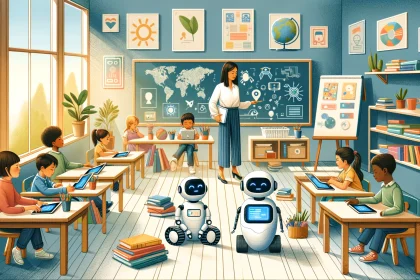Technology is changing us and everything around us. It’s an integral part of our daily lives. Not a day goes by when we do not rely on technology. From the simple act of ringing the doorbell to developing complex technological systems, our lifestyles depend on various assistive devices. Technology has improved countless aspects of our lives, and it has also made vast contributions to the field of communication. Many of these technologies have proven to be very useful in aiding individuals with autism.
Assistive Technological Aids for Autism
There are numerous technological aids for individuals with autism. They can range from electronic devices to software systems and phone applications. Technology comes in a variety of different forms. These include everything from recorders and projectors to complex systems such as intelligent software (i.e., SIRI) and AI-based adaptive hardware.
Apple has proved to be a useful tool for aiding individuals with autism. CNN reports the case of Sharia Siddiqui, who was diagnosed with autism at two years old. When her father bought an Apple iPad, he had no idea it would change Sharia’s life.
“The iPad has given her a sense of control that she never had before. She knows when you touch it, something is supposed to happen.”
Psychologist Dr. William Chen, a clinical director of Durham Autism foundation, said,
“…communication can be extremely challenging for an autistic child, and the iPad has provided Sharia access to a whole new world. Sharia started communicating through touches, and this has helped to extend her abilities to verbal speech. There are numerous applications available through the Apple store that help autistic children communicate gradually and efficiently.”
PCS Board App
Another excellent tool for people with autism is a Mayor-Johnson software program called “The Boardmaker.” It offers a 3,000 Picture Communication Symbol (PCS) album, in different colors paired with written messages. This presents the user with uncluttered symbols and clarifies the confusion that autistic children may have when interpreting pictures.
Mightier
By providing a positive goal, Mightier encourages autistic children to learn emotional regulation. With the use of a heart rate monitor, emotions are brought onto the screen. By doing so, players can visually understand and see what they are feeling.
Games mimic the challenges found in everyday life. This allows children to practice calming skills in a safe, fun environment. Mightier is packed with a game library, worlds to conquer, and fun characters to collect along the way.
Focus Pocus
An interactive game, Focus Pocus, is operated with the help of the brainwaves of the players. It’s played for fun and designed to provide an environment to practice skills such as attention, relaxation, impulse control, and memory. The game uses EEG input provided by a Brain-Computer Interface to read the brain and its electrophysiological states (metabolism rate).
Focus Pocus has been shown to increase the concentration levels of children and adults. It can also increase the concentration of autistic children in different areas of communication, cooperation, and coordination.
MIT Media Lab & Assistive Technological Aids for Autism.
Dr. Chen, a frequent guest at MIT Media Lab, commends MIT researchers for their active work in helping people with autism. They developed a wearable wristband with the autonomic nervous system (ANS) sensors, emotion-reading training software, and many other assistive technological aids for autism.
Dr. Rosalind Picard, Professor at MIT, works on new wearable devices that help monitor individuals’ moods. Her group introduced three Skin Conductance Sensors that can aid with autism. The first one senses the movement and placement of fingers when wired to a box.
Another way to judge Skin Conductance is through the Galvactivator LED device. This is a glove-like, wearable device that senses physiological arousals. It should be placed on the feet’ palms or soles because these areas contain high-density sweat glands. These glands are activated as a response to stimuli and sense the change in the individual’s emotional or physiological states. Lastly, the latest technology involves wireless communication of sensory responses from the wrist.
When Dr. Picard used the LED device on an autistic individual, she obtained surprising results. The child noticed that the graph measuring her physiological activity shot up instantly when somebody looked at her. Even when eye contact was not made, her stress levels jumped up as soon as someone looked at her.
Assistive Technological Aids for Autism
Technology has made a significant impact on helping individuals with autism. While emotionally intelligent computing is still years away, the future holds promise for assistive technological aids for autism.


